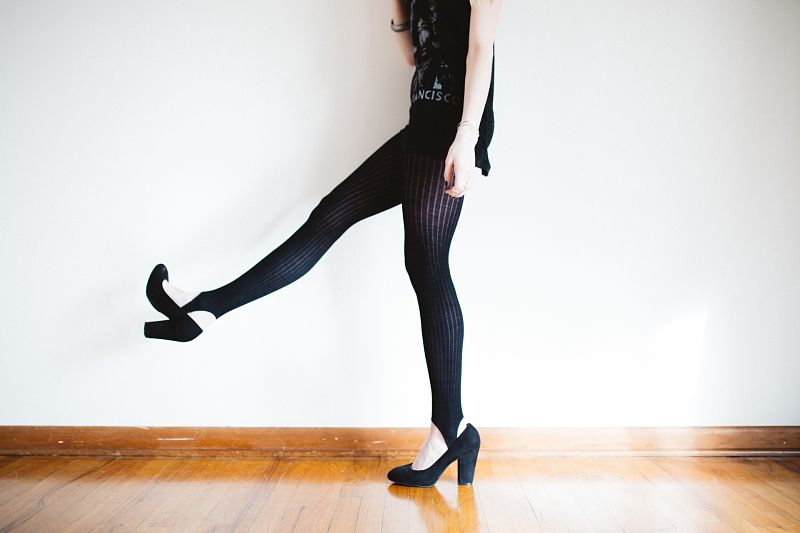We’re Still People
Last week we discussed music and I had a short lived love affair with a top ten list. If I can be completely transparent with all of you: sometimes I need to write articles like last week’s to remind myself I am still a normal human being, despite my illness.
Additionally, sometimes I just get really tired of talking about my bladder. When I was a kid, and I imagined what I would write about when I was older, I think it may have been a wee (pun intended) bit odd to know it would all center around my pee organ.
However, I’m still as determined as ever to bring forward a message of hope (and continue to talk about my bladder here and there). I found a culture of negative self-talk and surrender, when I got sick, and this is my way of fighting back against a damaging mindset.
Yet, we too often forget we are still people.
We focus so much of our time on the struggle, we let everything else fade away.
We enter into portrait mode, but it’s our illness who gets the focus, and the people we are, the things we love, and the people we love just turn into the fuzzy backdrop of our new life.
I understand pain and illness require a good deal of attention, as they should, but we need to be intentional about our mindset. Daily.
This is why I love to talk about the good stuff. The fun stuff. The stuff that can help us reshape our muddled identity.
If you haven’t checked out Music Heals Bro, go back and give it a scan. While you’re at it, this one was the first of the series on creativity, and is worth a read too.
Today, I want to spend more time on the article I have been referencing the past two weeks. From my own experience, I am not surprised by the conclusions the authors Stuckey and Nobel reached in the slightest.1
Art and Dance
The authors begin by defining health and explain they have found there are certain actions which facilitate the state of being healthy. Being healthy is not simply being absent from malady, but rather “complete physical, mental, and social well-being”.
Sometimes we can’t control the physical, but the other stuff: we have a lot of say.
We’ve already discussed music, but the other three creative therapies discussed were: visual arts therapy, movement-based creative expression, and expressive writing. I’m saving writing as a topic to savor next week, so we’ll be discussing visual arts therapy and movement-based creative expression today.
Let’s talk about each of them, shall we?

VISUAL ARTS THERAPY
As you probably suspected, the authors found activity in visual arts therapy was beneficial for those in pain and experiencing negative emotions.
Patients in a study by Guillemin were instructed to visualize and then draw their heart disease. They found this helped the patients and others better understand their illness. 2
The authors discussed a qualitative study (studies like this are looking more at observations, opinions and motivations of the participants than they are considering numerical data) in which cancer patients were asked how engagement in various types of visual art, including “textiles, card making, collage, pottery, watercolor, and acrylics”.3 They found these activities helped them in four major ways:
- “Helped them focus on positive life experiences” (instead of the cancer)
- “Enhanced self-worth and identity by providing them with opportunities to demonstrate continuing, challenge, and achievement”
- “ Enabled them to maintain a social identity that resisted being defined by cancer”
- “Allowed them to express their feelings in a symbolic manner”
Another study mentioned, conducted by Puig et al., found engagement in creative arts therapy helped enhance patients psychological well-being by “decreasing their negative emotions and enhancing their positive emotions”.4
Yet another found strong correlations between involvement in creative arts and improvement in social functioning, bodily pain, and more stable blood test results.5
Caregivers to those with illness were considered in a study by Walsh et al.. Engagement in creative arts interventions reduced stress, decreased anxiety, and increased positive emotion.6
There are many more studies discussed, and they all point to the same conclusion: giving patients access to visual arts intervention (this included everything from pottery to card making to painting) significantly impacted their overall well-being, in particular stress, anxiety, and pain.

MOVEMENT-BASED CREATIVE EXPRESSION
Friends, the bunny trail of research this topic has lead me down is insane. Go get Baby out of the corner and both of you, listen up.
I was listening to a podcast a couple weeks ago and the host was interviewing a woman who teaches spontaneous dancing. More specifically, it is a type of expressive dancing, in which one simply starts dancing when they feel the urge.
This is not too far from what happens in my home on a daily and repeated basis, but little did I know, my resurrected moves from the high school pom team (we couldn’t say “dance” – it was a private Christian school – do I need to say anything more?) were actually therapeutic. Win!
Before we get to the article, I have to talk about one more nugget I discovered while researching the spontaneous dancing.
SWEDEN IS THE NEW BOMONT
Friends, are we aware, that at least as of August, 2017, dancing in public was illegal in Sweden? I am so not kidding. Apparently a law went into effect in the 1970’s due to public dancing messing with “civil order’ or some nonsense. The Swedish government announced they would be removing the law in 2016, but it STILL stands! Patrick Swayze just did a chasse in his grave.
Swedish officals, you may want to pay attention to this next part, particularly for those in your population with chronic pain or illness. Movement-based creative expression is defined by the authors as anything which involves “non-verbal, primarily physical, forms of expression as psychotherapeutic or healing tools”.
According to the article I read, and the numerous studies they reviewed, moving the body in a creative way reduces stress and anxiety and promotes well-being. In a study of cancer patients in Connecticut, the implementation of dance and a movement program significantly increased quality of life, shoulder function and body image.7
Other studies found increases in self-esteem, cognitive and psychological well-being (word and listening recall, problem solving, etc.).
Sweden. It’s time to bring back the dancing. Until then, check out this website which had me laughing like a school girl at five o’clock in the morning.
CONCLUSION
Call up the DJ. Get your best dancing shoes on, and paint all over the dance floor, because Bieber should not be the only one persuading you anymore.
Dancing and visual art are not just pleasant experiences (although, this may depend on who you ask – I can think of a few people who would rather leave the dance floor to the rest of us). Dancing and visual arts, just as music, and writing, which we will talk about next week, have the capacity to heal, and to make us feel better about ourselves.
This is further confirmation of the legitimacy of my own dancing style: doing what feels good.
Thanks for reading, friends! If you’d like to contact me, I’m somewhere doing the Macarena, so leave your comments below, or click on that contact button.
See you next week!
References:
1 Stuckey, H. L., & Nobel, J. (2010). The Connection Between Art, Healing, and Public Health: A Review of Current Literature. American Journal of Public Health, 100(2), 254-263. doi:10.2105/ajph.2008.156497
2 Guillemin, M. (2004). Embodying Heart Disease Through Drawings. Health (London), 8 (2) 223-239
3 Reynolds, M.W., Lim, K.H. (2007). Contribution of Visual Art-Making to the Subjective Well-being of Women Living With Cancer; A Qualitative Study. Arts Psychother, 34(1): 1-10
4 Puig, A., Lee, S.M., Goodwin, I., Sherrard, P.A.D. (2006). The Efficacy of Creative Arts Therapies to Enhance Emotional Expression, Spiritually, and Psychological Well-being of Newly Diagnosed Stage I and Stae II Breast Cancer Patients: A Preliminary Study. Arts Psychother, 33(3). 311-318.
5 Staricoff, R. I. (2006), Arts in health: the value of evaluation. J.R. Soc Promotional Health, 126(3), 116-120
6 Walsh, S.M., Martin, S.C., Schmidt, L.A., (2004). Testing the efficacy of a creative-arts intervention with family caregivers of patients with cancer. J Nurse Scholarship; 36(3), 214-219.
7 Sandel, S.I., Judge, J.O., Landry, N., Faria, L., Ouellette, R., Majczak, M., Dance and movement program improves quality of life measures in breast cancer survivors. Cancer Nurse; 28(4). 301-309.

